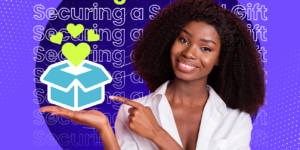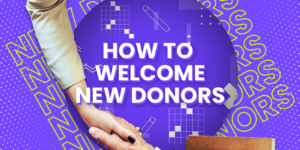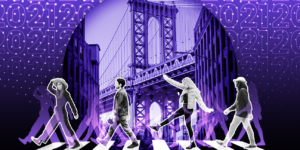You know no two donors are the same. So why would you assume your entire donor base wants to engage with your organization in the same way? Still, too many nonprofits fail to accommodate donor preferences in their outreach!
If you want to build strong relationships with your donors, they need to feel like they are being heard. Sure, you can get started by letting donors opt out of certain appeal mailings or your monthly newsletter.
But it will take a lot more to truly accommodate donor preferences. So, let’s go beyond the thinking of “what would I want to hear if I was a donor.” Because there are some real discrepancies between what nonprofit professionals think donors want and what donors say they want!
In fact, an Abila study found 42 percent of nonprofit professionals felt they weren’t communicating frequently enough. However, only 4 percent of donors felt the same. Yet 65 percent of donors said they were content with the frequency they were contacted, and 27 percent believed nonprofits were already reaching out too often!
So, it’s clear that nonprofits have more work to do to understand and accommodate donor preferences. Let’s explore some ways your nonprofit can do more to engage donors in the ways they prefer.
Data doesn’t deceive.
It can be difficult to determine what donors really want at first. This is especially true if you find you genuinely don’t have an answer, or worse if you assume to know the answer based on intuition.
The disparity between nonprofits and donors on communication frequency we mentioned earlier should be enough evidence to not go with your gut. Luckily, you probably know a lot more about your donors’ preferences than you think!
That is, of course, if your database is in order.
For example, let’s say you email a monthly impact report to your donors. But you notice these emails have lower click rates than your other email communications. Your donor base may care more about quality than quantity. So, listen to your data, scale back, and send quarterly impact reports instead!
Personalized ask strings are another great way your data can help you accommodate donor preferences.
You probably have information about each donor’s last gift, even if your nonprofit’s database leaves much to be desired.
It may seem remedial, but reaching donors with an ask that feels in the right ballpark is one way nearly every nonprofit already accommodates donor preferences. It’s a simple act that’s often overlooked.
If a donor’s last gift was $500 and your next ask gives options of $25, $50, or $75, you’ve missed an opportunity. And not just to raise more money! But also, to show donors you are aware of and trying to accommodate their giving tendencies and preferences.
READ MORE: Applying data-driven ask strings in your appeals.

Have you thought to ask?
We’ve all heard the phrase, “You won’t know if you don’t ask.” Yet, many nonprofits continue to conduct their outreach in the same way, without asking what their donors want! So, you shouldn’t assume one donor’s preferences will mirror another’s.
Ask donors if they prefer to receive a direct mail appeal or would rather just receive an email.
Or ask if they would ever consider attending one of your events. If not, don’t send them an invitation to your next one!
But a word of warning… if you use a donor survey to better understand how to accommodate donor preferences, you need to act on the feedback!
If a donor responds to your survey and says you are reaching out too often, you’d better scale back on the communications you send them! Failing to accommodate donor preferences when explicitly stated will make your donors feel like their concerns were ignored.
And it doesn’t make sense to not do anything after you put in all that work to discover what your donors want. That’s like a doctor diagnosing a patient with a terminal illness and walking away without discussing treatment options!
READ MORE: Why aren’t you using donor surveys?

Are you using the right channels?
If you read our blogs, you know we are huge advocates of using a surround-sound communications strategy to reach donors and encourage engagement. But we’ve never said that every organization needs to use every channel for every donor!
You can make a bigger impact by reaching donors through their preferred channels.
According to the Abila study referenced earlier, 55 percent of millennials are open to receiving communications from nonprofits via text message. However, only 24 percent of baby boomers felt the same. If you have an older donor base, you probably won’t spend time and energy developing a robust text-to-give campaign.
However, this is not a golden rule! For example, an organization with an older but very tech-savvy donor base may not want to rule out a text-to-give initiative or social media campaign.
Your data and donor feedback are the only things that can steer you towards the right approach for your organization. So, first, see if the answer lives in your data. Then, if not, reach out to donors and ask them yourself!

Send the right message to the right donor.
Have we hammered the point that no two donors are the same in this blog post yet?
And while that is true, it is also unrealistic to expect nonprofits to develop a unique outreach strategy for every donor!
This will allow you to version content to better reflect what groups of like-minded donors want to hear. It can also make it easier to suppress certain communications for groups that would prefer not to receive them at all!
There’s no shortage of ways to segment your audience. And once again, past giving history is a great place to start.
Consider separating your donors into different giving tiers based on past giving. Then, develop an ask for each level instead of coming up with individualized asks for everyone. You can take this beyond the ask itself and come up with messages and non-ask communications that are more relevant for high, mid, or small-dollar donors.
READ MORE: How to segment your nonprofit’s audience.
Help your donors feel heard.
Think back to a time when you were a kid. I’m sure there was at least one meal your mom made that you were never excited about.
Every Tuesday is meatloaf night. It’s the way it always has been. And you’ve always hated it!
You tell your mom every week, “Please, no more meatloaf!” But your pleas were ignored. Before you know it, the meatloaf is in front of you again. And your resentment towards mom’s meatloaf grows stronger each week. (Mom, if you’re reading this, no offense!)
Now, swap the mom in this scenario for your nonprofit and the child with a donor. The donor keeps telling you, through data and direct feedback, that they don’t want to receive solicitations outside of your year-end appeal.
And yet, you keep sending a spring appeal, a fall appeal, a Giving Tuesday appeal, and the year-end appeal year after year.
The donor can only stomach so much before they get irritated. They feel the same frustration you did each week when mom’s meatloaf was on the menu. However, the donor has more power than the child in this scenario.
Once they get tired of being ignored, they may stop giving to your organization and find another nonprofit with similar goals. One that goes the extra mile to accommodate donor preferences.
So, the next time you feel compelled to assume what donors want, stop! Instead, think about how they will feel if you make it clear that you’re not willing to listen.
Want to build stronger relationships with donors? Click here!









